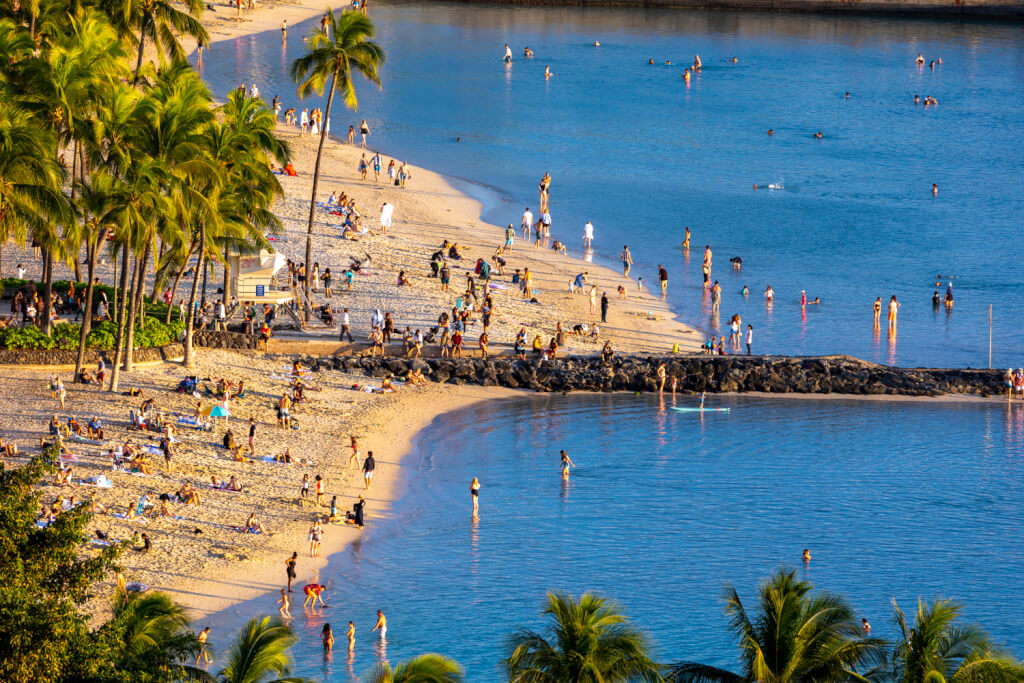A couple of reports that came out last week hint that Hawaii tourism has a long road to recovery. Sure, tourism is booming, but the mix of visitor isn’t the same as it was pre-pandemic, which also means that visitor spending isn’t what it used to be.
For tourism-based economies, attracting visitors, especially return visitors, is critical. However, not all visitors are equal. And that’s an important consideration when these tourists’ spending is a primary driver of your economy. Visitors that spend less use more resources but provide little in return, whereas high-spending visitors often have less of an impact and provide greater returns.
Now I’m not suggesting that visitor destinations should seek to attract only the wealthy, but there needs to be a balance. And, as far as Hawaii is concerned, things have been unbalanced since the pandemic hit. And that imbalance is why Hawaii tourism has a long road to recovery.
Hawaii Tourism Has a Long Road to Recovery
Now, the reason Hawaii tourism has a long road to recovery is multi-layered. One of the biggest issues is, of course, the absence of Japanese visitors. At the moment, Japanese visitor recovery is at just 30% of where it used to be in 2019. Unfortunately, current projections state that this isn’t going to change in the near future. In fact, Hawaii Tourism Japan predicts that we’ll see Japanese visitor recovery hit only 40% or 50% by the end of the year.
Full recovery is now predicted to take till the end of 2024.
Why is it taking so long? For the very reasons I’ve covered in the past. Inflation in the U.S. is a major driver, especially since the value of the Yen against the U.S. dollar remains depressed. Of course, that’s not the full picture. Higher fuel prices mean that airline fuel-surchargers are up, which is also playing a role, while the crush of domestic visitors dramatically drove up the price of lodging and rental cars. Of course, lingering concerns about COVID continue to have impacts, too.
The other part of why Hawaii tourism has a long road to recovery will sound counter-intuitive to what I just discussed above – low airfares from the continental U.S. These low fares are great for locals looking to travel out of state, but they also attract low-spending visitors. This fills up either hotel rooms or rental cars that could’ve gone to higher-spending ones. And that’s if people even stay in hotels! Some lower-spending visitors researching trips to Hawaii are asking if they can sleep on the beach to avoid paying for hotels! These lower-spending visitors also often irk, not only residents, but higher-spending visitors, too. Heck, many visitors don’t even like each other!
Sure, the lower-spending visitors aren’t a big reason why Japanese visitors – who are typically higher spending – haven’t returned, but they can contribute to reasons why Japanese (and other higher-spending) visitors don’t want to return.
Final Thoughts
As you can see, Hawaii’s tourism issue is complicated. Further, signs are increasingly pointing to the fact that Hawaii tourism has a long road to recovery, especially since high inflation refuses to go away. Of course, with how strange things have been and continue to be, it’s difficult to accurately predict what will happen. We’ll just have to wait and see how things ultimately play out. But, Hawaiian Airlines ought to come up with another way to boost its revenue rather than wait for the return of Japanese visitors.

